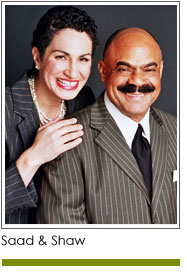 Continuous training, education and exposure to new people and ideas can lead to continuous improvement, motivation, and engagement. Workshops, seminars and conferences add to the skill set and competency of nonprofit employees, executives, board members and volunteers. The question is: what happens after the workshop or conference?
Continuous training, education and exposure to new people and ideas can lead to continuous improvement, motivation, and engagement. Workshops, seminars and conferences add to the skill set and competency of nonprofit employees, executives, board members and volunteers. The question is: what happens after the workshop or conference?
Our experience has shown that the euphoria and “light bulbs” that go off during a workshop or conference sometimes don’t make it back to the office or the board room. It’s no one’s fault – it’s just human nature. Life gets in the way of good intentions, and sparks of creativity and innovation can dim without kindling. One method for ensuring you and your team bring your “aha! moments” back to the office is to create a plan for implementation before attending.
Here’s how it works. First determine which workshop, conference or webinar will benefit your organization’s work. Then determine who should attend. Where possible select more than one person – they will become your learning leaders. Prior to attending ask selected participants to write down the three things they are seeking to learn from the event. During the event they should take notes, with an emphasis on recording information and ideas that relate to what they are seeking to learn.
After the event, participants should share their learnings and ideas with others in the organization. The presentation should be part of a formal debrief. A team should be created to implement the ideas and learnings, and dates should be set that drive actions towards new goals.
This process can apply to learnings at all levels. Perhaps it is something simple: ensuring all members of the organization have a signature block for their emails that includes the nonprofit’s mission, website, social media and the individual’s direct phone number and email. It could be a bit more complex: integrating the nonprofit’s ticket sales into the donor database, or increasing revenue from special events. Maybe board members have suggestions for how to improve their meetings and increase attendance.
The learning – or aha! moment – could require a culture shift. Board members and staff may return from a conference with suggestions for how to better engage the board members, volunteers and staff with fundraising. When a culture shift is required, the first step is to debrief with the executive director. Gain her support and buy-in. Share the plan for how to implement the new idea along with projected outcomes.
This process creates opportunities for leadership, and allows those who did not attend the event to benefit from key learnings. When seeking to grow your nonprofit’s fundraising be sure to extend the impact of outside learning opportunities by planning in advance and following through afterwards. Let us know what works for you.
Copyright 2013 – Mel and Pearl Shaw
Mel and Pearl Shaw are the authors of “Prerequisites for Fundraising Success.” They position nonprofits for fundraising success. Visit them at www.saadandshaw.com.














